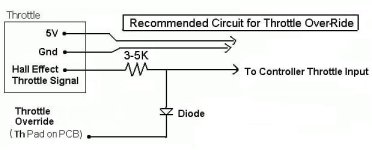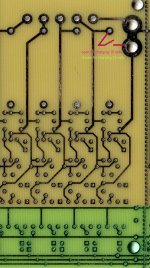steveo said:
Hey guys,
Just a question as per i'm still learning about this bms boards a bit more everyday, When you cut the board and seperatie them into there individual 4s bms boards; Do all the rest of the bms boards need to know what the others are running at; or does it not matter; Must the entire bms board stay in one piece in order to use the full 24s board.
I hope this make sence for you guys..
Also one more question; Will 1/2 amp be sufficent for dealing with a 10p 24s a123 pack.
thanks
-steveo
You can break the board up into subsections, which I assume you want to use with subpacks for your setup, and connect the subsections via six wires that make up the opto bus lines, two for the LVC and four for the charger control. These are shown in yellow below.
These can be thin-gauge wire, as there's not much current to carry. The only other thing you need to do is make sure that each subsection board has the first and last connections to the first and last cells in the subpack. This is the reason for the duplicate cell connection holes (i.e. -- 5/6, 10/11, etc...).
-- Gary





